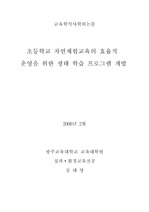

PARTNER
검증된 파트너 제휴사 자료
국내 토종개의 염색체 조사에 관한 연구 (Study on chromosomes survey of Korea native dogs)
한국학술지에서 제공하는 국내 최고 수준의 학술 데이터베이스를 통해 다양한 논문과 학술지 정보를 만나보세요.
6 페이지
최초등록일 2025.03.14
최종저작일
2011.09

-
서지정보
· 발행기관 : 한국동물위생학회
· 수록지 정보 : 한국동물위생학회지 / 34권 / 3호 / 291 ~ 296페이지
· 저자명 : 박창은
초록
The karyotype of the domestic dog is widely accepted as one of the difficult mammalian karyotypes to work. In contrast to many other animals, knowledge about the canine karyotype is quite sparse. The dog has a total of 78 chromosomes; all 76 autosomes are acrocentric in morphology and show only a gradual decrease in length. But appear to be quite small and difficult to identify unambiguously. To purchased standardization of chromosome in Korea native dog, there were analyzed by conventional trypsin/Giemsa staining(GTG-banding techniques), and were compared with 4, 6, 8, 11, 13, 17 chromosome. There were no variations in karyotypes which were analyzed by conventional GTG-banding techniques, but differences were observed in G-banding patterns with Sapsaree, Jindo, Gyeongju DongGyeong dogs, Welshi-Corgi. It is not clear that these disagreements in G-banding patterns between strains of dog were caused by chromosome polymorphism or a difference in interpretation. Comparative analysis of the distribution patterns of conserved segments defined by dog paints in the genomes of the Korea native dogs demonstrates that their differences in the karyotypes of these three species could have resulted from acrocentric banding patterns.영어초록
The karyotype of the domestic dog is widely accepted as one of the difficult mammalian karyotypes to work. In contrast to many other animals, knowledge about the canine karyotype is quite sparse. The dog has a total of 78 chromosomes; all 76 autosomes are acrocentric in morphology and show only a gradual decrease in length. But appear to be quite small and difficult to identify unambiguously. To purchased standardization of chromosome in Korea native dog, there were analyzed by conventional trypsin/Giemsa staining(GTG-banding techniques), and were compared with 4, 6, 8, 11, 13, 17 chromosome. There were no variations in karyotypes which were analyzed by conventional GTG-banding techniques, but differences were observed in G-banding patterns with Sapsaree, Jindo, Gyeongju DongGyeong dogs, Welshi-Corgi. It is not clear that these disagreements in G-banding patterns between strains of dog were caused by chromosome polymorphism or a difference in interpretation. Comparative analysis of the distribution patterns of conserved segments defined by dog paints in the genomes of the Korea native dogs demonstrates that their differences in the karyotypes of these three species could have resulted from acrocentric banding patterns.참고자료
· 없음태그
-
자주묻는질문의 답변을 확인해 주세요

꼭 알아주세요
-
자료의 정보 및 내용의 진실성에 대하여 해피캠퍼스는 보증하지 않으며, 해당 정보 및 게시물 저작권과 기타 법적 책임은 자료 등록자에게 있습니다.
자료 및 게시물 내용의 불법적 이용, 무단 전재∙배포는 금지되어 있습니다.
저작권침해, 명예훼손 등 분쟁 요소 발견 시 고객센터의 저작권침해 신고센터를 이용해 주시기 바랍니다. -
해피캠퍼스는 구매자와 판매자 모두가 만족하는 서비스가 되도록 노력하고 있으며, 아래의 4가지 자료환불 조건을 꼭 확인해주시기 바랍니다.
파일오류 중복자료 저작권 없음 설명과 실제 내용 불일치 파일의 다운로드가 제대로 되지 않거나 파일형식에 맞는 프로그램으로 정상 작동하지 않는 경우 다른 자료와 70% 이상 내용이 일치하는 경우 (중복임을 확인할 수 있는 근거 필요함) 인터넷의 다른 사이트, 연구기관, 학교, 서적 등의 자료를 도용한 경우 자료의 설명과 실제 자료의 내용이 일치하지 않는 경우
찾으시던 자료가 아닌가요?
지금 보는 자료와 연관되어 있어요!
문서 초안을 생성해주는 EasyAI


